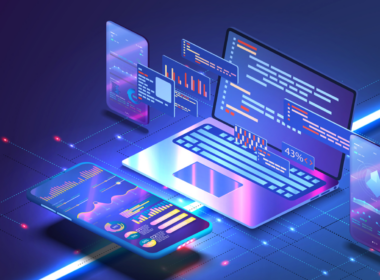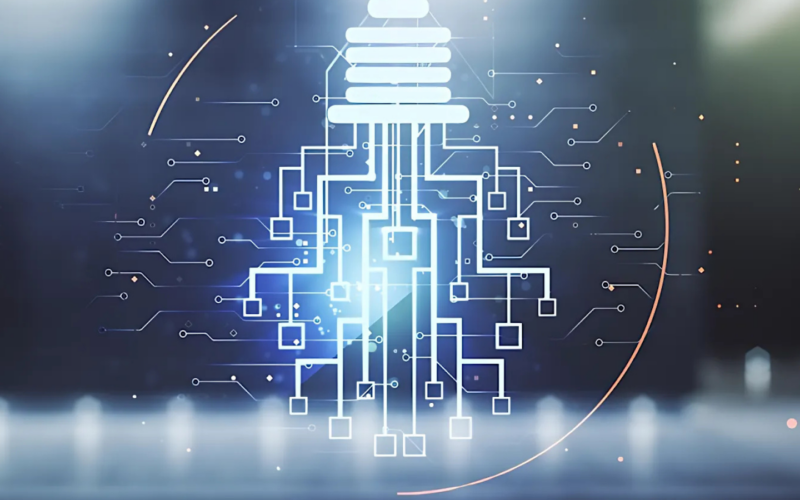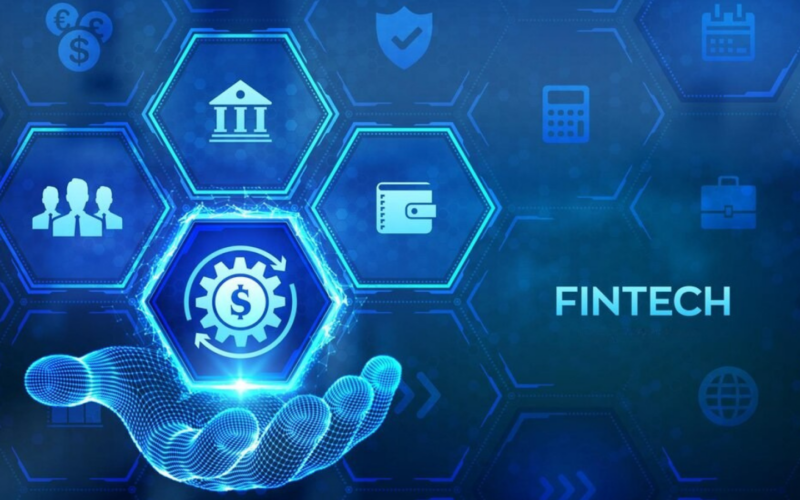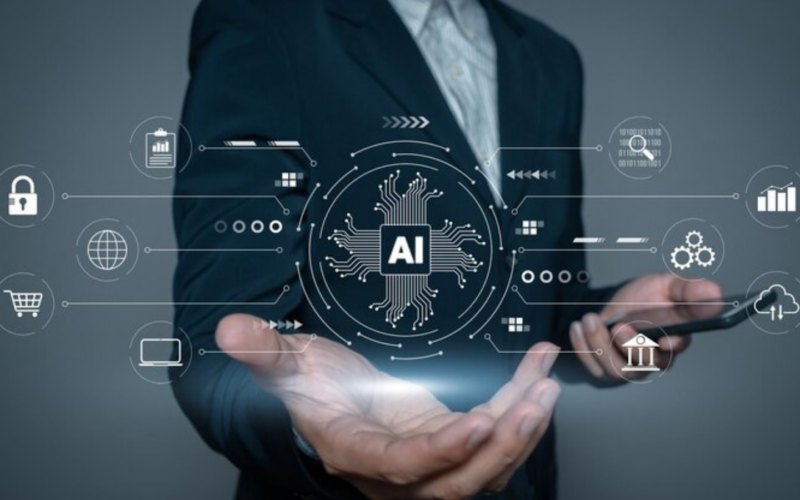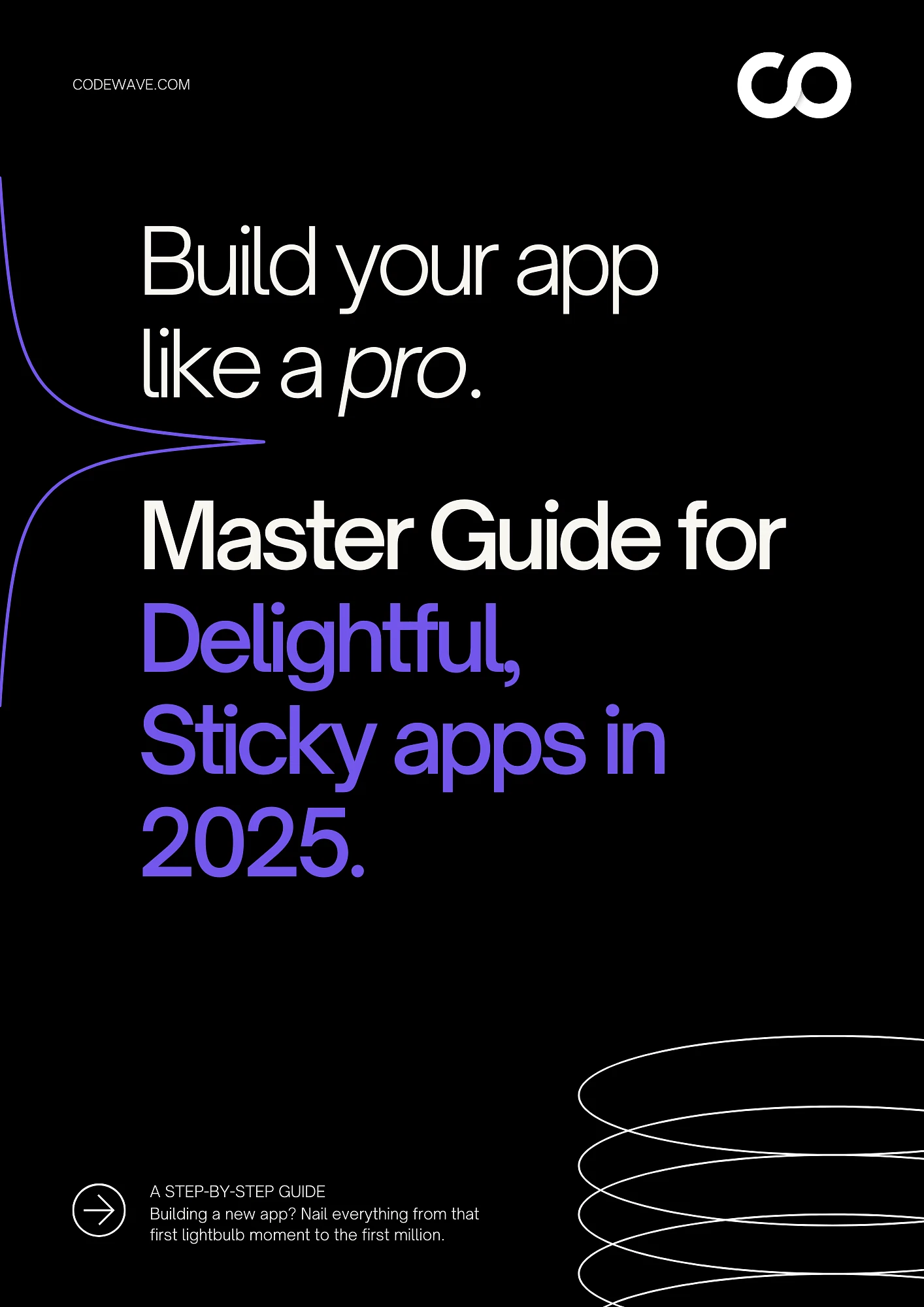Generative AI creates new content, like text, reports, or simulations, based on patterns in your existing data. For example, utility companies are using it to generate synthetic outage scenarios when real data is sparse, helping teams improve grid planning.
The global generative AI in utilities market is projected to grow from $713 million in 2023 to over $13,308 million by 2033. That’s a sign of how fast the energy sector is turning to smarter tech.
Still, you might be stuck dealing with scattered data, slow decision cycles, or clunky reporting tools that don’t give you the full picture.
In this guide, you’ll discover practical generative AI use cases in energy sector and help you make better use of your data.
Key Takeaways
- Generative AI use cases in energy sector are helping utilities improve grid planning, automate reports, enhance customer service, and support smarter forecasting.
- Key use cases include synthetic data generation, predictive maintenance, scenario planning, and AI-powered chatbots for support.
- Getting started involves choosing one use case, using existing data, keeping humans in the loop, and measuring small wins before scaling.
- Codewave builds tailored GenAI solutions for energy and utility businesses, cutting down manual effort, speeding up decision-making, and delivering practical results without overhauling existing systems.
How Does GenAI Work?
You’ve got loads of grid data pouring in from sensors, temperatures, voltages, usage spikes, but when it’s time to run a failure scenario, the data’s either incomplete or just not the right fit. So, your team spends hours piecing together spreadsheets, only to hit dead ends.
That’s where generative AI steps in. It doesn’t just sort data, it creates new, realistic outputs based on what it’s learned from your existing information. You feed it thousands of past outage records, and it can generate similar but fresh scenarios that help you test your system’s response better.
Before jumping into the practical generative AI use cases in energy sector, let’s quickly break down how GenAI works:
1. It learns from your existing data
Generative AI models are trained on tons of existing information, maintenance reports, sensor logs, weather patterns, customer queries, compliance docs, and more. The more consistent and detailed your data, the better GenAI gets at producing useful outputs.
Example:
You upload thousands of transformer failure records. The model studies patterns, like voltage dips before a failure or weather-related triggers. Later, it can generate new, realistic failure scenarios that help you plan ahead.
2. It generates new outputs based on patterns
Unlike traditional AI, which just analyzes or predicts, GenAI actually creates new content, text, images, audio, and even structured data. These outputs aren’t random. They’re based on what it has learned.
Example:
Say you need to submit regular maintenance summaries to your state’s energy commission. GenAI can take your logs and auto-generate a readable draft with key highlights, saving your engineers hours of writing.
3. It responds to prompts or instructions
You don’t need to build a fancy dashboard. You just prompt it in plain language. GenAI takes your input, connects it with its training data, and gives you a result that fits.
Example:
Type in: “Draft a customer update explaining the upcoming 6-hour outage due to transmission line repair.”
The model responds with a clear, professional message tailored to your tone and service area.
4. It adapts to your use case
The same model can be fine-tuned for different roles, planning, customer service, reporting, forecasting, without starting from scratch each time.
Example:
One fine-tuned model handles outage simulation. Another handles customer billing queries. Both use your internal data but serve different parts of your team.
Struggling to make sense of scattered data and slow decision cycles? Explore Codewave’s Generative AI Development services to build smart, purpose-driven tools that work across your energy operations. Start turning your data into action today!
Now that you know how it works, let’s look at where it’s actually being used in energy and utilities.
Top Generative AI Use Cases in Energy & Utilities
According to IDC, by 2026, half of advanced-market utilities will use AI-powered systems to coordinate distributed energy sources, aiming to cut carbon emissions by up to 30%. That’s a clear sign the industry isn’t just collecting data, it’s starting to act on it.
Generative AI is becoming part of that shift. It creates new outage scenarios, maintenance summaries, customer replies, and more, all based on your existing data.
Let’s walk through the top generative AI use cases in energy sector:
1. Synthetic Data Generation for Grid Simulations
GenAI models can create synthetic datasets that replicate grid behavior, like voltage drops, sudden outages, or demand surges, by learning from your existing data.
You don’t always have complete or clean data for every edge case. And rare events, like extreme weather or EV demand spikes, can’t be predicted accurately with historical data alone. This makes your planning fragile.
Real-life application:
During a summer heatwave, your team needs to test load behavior with newer EV stations in the mix. GenAI can simulate hundreds of realistic demand curves, combining past usage patterns with projected temperatures, helping you fine-tune your grid’s response.
What kind of data does GenAI use?
- SCADA logs
- Weather patterns
- Load profiles
- Historical outage records
- Transformer sensor readings
- EV charging station data
Business impact:
- Cuts down guesswork in contingency planning
- Reduces downtime losses by prepping for edge-case scenarios
Metrics to track:
- Increase in simulation coverage
- Reduction in planning cycle time
- Number of high-risk scenarios accurately modeled
Who benefits:
- Grid planning teams
- Reliability engineers
- Disaster preparedness units
Deployment note: Can be set up using open-source GenAI models and integrated into existing load forecasting tools.
Risk check: Always validate synthetic outputs with SMEs to avoid modeling false positives.
Starter tip: Begin with a small pilot using the past 5–10 years of outage and weather data. Compare GenAI scenarios with real ones to gauge accuracy.
2. Automated Report Generation & Compliance Filing
GenAI can turn raw operational data, like logs, schedules, inspection notes, or usage reports, into structured, readable reports that meet internal and regulatory standards. It helps auto-generate drafts for compliance filings, performance summaries, safety updates, and more.
Real-life application:
Say your utility needs to submit monthly emissions and equipment inspection summaries to a regulatory board. Instead of collecting everything by hand, GenAI can analyze your SCADA data, match it with maintenance logs, and auto-generate a draft report in the required format, ready for review and sign-off.
What kind of data does GenAI use?
- SCADA logs and alerts
- Maintenance schedules and work orders
- Metering and consumption data
- Environmental monitoring data (emissions, waste output)
- Safety audits and internal checklists
Business impact:
- Cuts down report preparation time from days to hours
- Reduces manual errors in filings and documentation
- Frees up engineers and managers for higher-value work
Metrics to track:
- Time saved per report cycle
- Reduction in error rates or rework
- Faster turnaround time for compliance submissions
Who benefits:
- Compliance and regulatory teams
- Asset and operations manager
- Environmental reporting units
Deployment note: Can be integrated with existing ERP/asset management systems and fine-tuned with historical filing formats.
Risk check: Human review is still needed before submission—GenAI drafts well, but context and accountability stay with your team.
Starter tip: Start with one recurring report, like your monthly equipment downtime summary. Train GenAI on a few past reports and logs, then compare its output before going live.
Still spending hours on repetitive tasks that slow your team down? Explore Codewave’s Process Automation services to streamline workflows, reduce manual effort, and keep your business moving faster. Start automating what matters today.
3. Predictive Maintenance with GenAI-Generated Failure Scenarios
GenAI can generate realistic failure scenarios by learning from your historical equipment data. It simulates what a breakdown might look like, timing, symptoms, triggers, so your systems can flag issues earlier, even before standard thresholds are breached.
Real-life application:
Let’s say your team is monitoring a high-voltage transformer that hasn’t had issues in months. But based on past logs, GenAI generates several plausible failure progressions, like gradual voltage dips followed by temperature spikes.
These scenarios help your monitoring system set more sensitive alerts, catching anomalies earlier than usual.
What kind of data does GenAI use?
- Historical failure logs
- Sensor data (vibration, heat, oil pressure, noise)
- Maintenance records and repair timelines
- Weather and load conditions during past failures
Business impact:
- Reduces unplanned downtime
- Increases asset lifespan by catching issues early
- Lowers maintenance costs by preventing catastrophic failures
Metrics to track:
- Reduction in emergency maintenance incidents
- Increase in mean time between failures (MTBF)
- Faster anomaly detection rates
Who benefits:
- Field maintenance teams
- Asset reliability engineers
- Grid operations managers
Deployment note: GenAI can be fine-tuned using 5–10 years of maintenance and failure data, and connected to your existing condition monitoring system.
Risk check: Avoid overfitting to old data, include environmental context and evolving load conditions to keep scenarios realistic.
Starter tip: Pilot this on one asset class, like switchgear or transformers, and test GenAI-generated scenarios against your current monitoring thresholds. Adjust your alert logic based on new patterns identified.
4. Customer Interaction and Energy Advisory Chatbots
GenAI-powered chatbots handle customer questions in plain language, whether it’s billing issues, outage updates, or tips to reduce energy use. These bots go beyond scripted replies.
They understand context, adapt responses, and learn from past interactions to respond more naturally.
Real-life application:
A customer asks why their recent bill spiked. The GenAI chatbot reads their usage history, identifies the spike, explains the reason clearly, maybe increased HVAC usage during a heatwave, and offers energy-saving suggestions based on similar past patterns. No human needed unless the case is unusual.
What kind of data does GenAI use?
- Historical customer support tickets
- Smart meter readings and usage patterns
- Billing records
- Outage and maintenance schedules
- Tariff details and energy-saving programs
Business impact:
- Reduces support workload and wait times
- Improves customer satisfaction through faster, clearer responses
- Cuts down call center costs by automating common queries
Metrics to track:
- First-contact resolution rate
- Reduction in average response time
- Customer satisfaction (CSAT) score uplift
Who benefits:
- Customer service teams
- Energy advisors and outreach teams
- Marketing teams (via upselling or tips integration)
Deployment note: You can start with a GenAI chatbot trained on FAQs, then expand it using anonymized ticket data and smart meter insights.
Risk check: Set boundaries, bots shouldn’t handle service complaints or legal disputes without human review. Always offer an easy option to talk to a person.
Starter tip: Roll it out for one use case, like billing queries, then track how many users complete conversations without escalation. Use feedback to improve the next version.
5. Smart Content for Stakeholder Communication
GenAI can draft tailored content for different stakeholders, investors, regulators, internal teams, or the public, based on your operational data, project updates, and performance metrics. It pulls from raw inputs and turns them into well-written summaries, presentations, or briefing notes in minutes.
Real-life application:
Your ESG team needs to prepare a quarterly sustainability performance update. GenAI pulls recent emissions data, completed projects, and regulatory highlights, and generates a clean, readable draft aligned with your reporting style. No need to start from scratch.
What kind of data does GenAI use?
- Operational KPIs (generation, distribution, downtime)
- Emissions and environmental metrics
- Financial and performance data
- Project updates and milestone logs
- Past stakeholder communication templates
Business impact:
- Speeds up content creation across departments
- Improves clarity and consistency in stakeholder updates
- Helps non-technical stakeholders understand key insights
Metrics to track:
- Time saved on report and content creation
- Stakeholder engagement (email open rates, meeting prep time)
- Reduction in content revisions or approval delays
Who benefits:
- Corporate communications teams
- ESG and sustainability teams
- Investor relations and leadership
Deployment note: Train GenAI using past stakeholder briefs and standard reporting formats. Use prompts to tailor tone, formal for board members, accessible for internal teams.
Risk check: Review for tone, accuracy, and context. GenAI can structure content well, but numbers and framing still need human judgment.
Starter tip: Start with internal team updates or project briefs. Once the tone and accuracy hit the mark, expand to external communications.
6. Scenario-Based Forecasting & Planning Support
GenAI can generate multiple future scenarios, based on changes in weather, regulations, fuel prices, or demand shifts, to help your planning teams test assumptions and make more informed decisions. It turns static forecasts into dynamic, narrative-driven possibilities.
Real-life application:
You’re preparing a 5-year capacity plan. GenAI simulates different outcomes, what if EV adoption rises faster than expected? What if a new emissions rule kicks in? It presents those paths as readable, scenario-based reports, helping your team weigh the impact before committing to new assets.
What kind of data does GenAI use?
- Historical demand and load data
- Regulatory trends and past policy shifts
- Market fuel price data
- Renewable integration rates
- Weather and climate models
- EV adoption and DER projections
Business impact:
- Makes long-term planning more flexible and data-backed
- Helps avoid over- or under-investment in infrastructure
- Builds stronger cases for internal or regulatory approvals
Metrics to track:
- Number of scenarios explored per planning cycle
- Forecast accuracy over time
- Time saved in stakeholder presentations and what-if modeling
Who benefits:
- Strategic planning teams
- Grid expansion and investment teams
- Regulatory and compliance units
Deployment note: Use GenAI to enrich existing forecasting tools with natural-language scenario writeups and diverse data sources. Combine with human review for final recommendations.
Risk check: Scenarios are only as good as the assumptions behind them—keep data updated and assumptions clear.
Starter tip: Pick one use case, like renewable integration forecasting. Use GenAI to model different weather and policy-driven outcomes, then test how they affect your long-term grid investment strategy.
7. Site Design and Engineering Support
GenAI can assist engineers by generating design drafts, layout options, documentation, and feasibility summaries for new energy infrastructure, like solar farms, wind turbine placements, or battery storage units. It learns from past project data and design patterns to suggest workable options faster.
Real-life application:
Your team is evaluating a new site for a solar project. GenAI analyzes land slope, sun exposure, nearby utility connections, and historical project layouts. It then suggests multiple panel arrangement options, complete with pros and cons, saving weeks of back-and-forth planning.
What kind of data does GenAI use?
- GIS/topographic data
- Historical site designs and layouts
- Equipment specs and vendor catalogs
- Regulatory and zoning requirements
- Environmental impact reports
- Project timelines and construction logs
Business impact:
- Speeds up early-stage design and feasibility planning
- Reduces rework from design mismatches or overlooked constraints
- Helps junior engineers ramp up quickly with assisted drafting
Metrics to track:
- Time saved on initial site design
- Fewer design revisions during review
- Shorter feasibility assessment cycles
Who benefits:
- Site planning and engineering teams
- EPC contractors
- Project development teams
Deployment note: GenAI tools can be paired with GIS software and CAD platforms. Outputs can include rough layouts, permit checklists, and environmental summaries.
Risk check: Always verify site-specific recommendations with local data and engineering standards. GenAI helps draft, not decide.
Starter tip: Start by feeding GenAI past design files and project reports. Then use it to generate first-draft layouts for new sites, and compare them against your standard process to spot time savings.
Now that you know what GenAI can do, here’s how you can start using it in your own operations.
Getting Started: Implementation Tips
Getting started with GenAI doesn’t mean you need to rebuild everything or hire a whole new team. The key is to start small, focus on one clear use case, and build from there.
Below are simple, business-focused tips to help you start using generative AI use cases in energy sector:
1. Start with One Problem, Not a Platform
Don’t aim for a full transformation out of the gate. Pick a single use case that slows your team down, maybe it’s monthly compliance report drafting or repeat customer queries.
Example: If your support team spends hours each week answering the same five billing questions, start there. Train a GenAI chatbot using past tickets and see how many queries it can handle before escalation.
2. Use What You Already Have
You don’t need a new data warehouse. Most utilities already sit on years of historical logs, customer records, maintenance reports, and SCADA data. That’s plenty to get started.
Example: Feed past equipment failure logs into a GenAI model to generate synthetic failure scenarios for predictive maintenance testing, no extra integrations needed upfront.
3. Keep It Human-in-the-Loop
Don’t fully automate right away. Use GenAI to draft, not decide. Keep people in control so your outputs stay accurate, compliant, and aligned with business needs.
Example: Let GenAI draft your monthly sustainability report using internal KPIs. Have your ESG lead review and finalize before submission. You save time without risking accuracy.
4. Choose Lightweight Tools First
Skip the heavy IT rollout. Many GenAI tools offer API-based access or user-friendly interfaces that your teams can test without long onboarding.
Example: Tools like ChatGPT Enterprise or Claude can be tested in internal settings, have your comms team use it to draft stakeholder updates before moving on to more integrated systems.
5. Measure the Small Wins
Track what matters: time saved, reduction in support tickets, fewer revisions, or faster turnaround. That’s how you make a case for scaling it later.
Example: If a GenAI-powered tool cuts report drafting time by 50%, document it. Use that result to justify expanding to other departments.
6. Pilot with a Feedback Loop
Every first use will need refining. Make sure you build feedback into the process so your team can fine-tune prompts, improve results, and build trust.
Example: After deploying a chatbot for outage updates, let support agents rate responses. Adjust the bot’s training to reflect tone and accuracy issues they flag.
Looking to simplify complex business processes and bring everything under one roof? Explore Codewave’s B2B Portal Development services to build custom, scalable platforms that streamline operations and boost collaboration. Let’s build smarter, together.
Getting started with GenAI isn’t about big leaps, it’s about small, steady steps that solve real problems. Once your team sees the value, scaling it becomes a lot easier.
Why Choose Codewave for Generative AI?
Curious to see how Codewave can help you bring generative AI into your energy or utility business? Explore our portfolio to see how we’ve helped companies turn raw data into smarter decisions, faster operations, and real-time insights using GenAI.
When it comes to deploying generative AI use cases in energy sector, you need more than just tools, you need a partner who understands both the tech and the business. At Codewave, we work closely with your team to build tailored GenAI solutions.
From pilots to full-scale deployment, we help you take practical steps that actually stick, without overhauling your entire system.
What you get with Codewave’s Generative AI solutions for energy & utilities:
- 60% faster turnaround in building and deploying GenAI-powered tools like report generators, chatbots, and forecasting assistants.
- 3x quicker pilot-to-production cycle, helping you roll out GenAI use cases like predictive maintenance or customer support automation without long delays.
- Save up to 3 weeks each month by reducing manual effort in reporting, planning, and stakeholder communication.
- 25% lower development costs through efficient, AI-driven workflows tailored to your existing systems and data.
Our Generative AI services for energy & utilities:
- GenAI Integration for Energy Systems: We assess your operational goals and design tailored generative AI use cases in energy sector.
- Custom GenAI Tool Development: From idea to deployment, we build powerful tools like synthetic data generators, stakeholder report drafters, and energy advisory chatbots that simplify workflows and drive better decisions.
- Advanced AI Feature Integration: We embed GenAI capabilities into your existing platforms, enabling real-time insights, smart automation, and contextual responses that support teams across planning, operations, and customer service.
- Operational Analytics & Optimization: We deliver clear dashboards and reporting tools powered by GenAI to help you track performance, reduce bottlenecks, and make informed, data-backed decisions across the board.
Curious to see what your data is really capable of? Book a free demo with Codewave’s experts and discover how we can turn your data into real results.
FAQs
Q. How can I start using generative AI in my utility business without major disruptions?
A. Start small, pick one high-impact use case like automated reporting or customer support. Use existing data and begin with a pilot. Keep the process simple by using cloud-based tools and keeping your team involved through human-in-the-loop workflows.
Q. What kind of data do I need to train a GenAI model for energy use cases?
A. It depends on the use case. For grid simulations, you’ll need outage logs, load data, and weather records. For reporting or chatbot automation, past reports, customer tickets, and usage histories are key. The more consistent and historical the data, the better the results.
Q. Is generative AI use cases in energy sector secure for handling compliance and regulatory documents?
A. Yes, but with safeguards. Always keep humans in the loop before submitting final documents. Use encryption, anonymize sensitive data, and ensure that GenAI tools follow your internal governance and any applicable regulations like NERC, FERC, or regional guidelines.
Q. Will generative AI use cases in energy sector replace my existing analytics or maintenance tools?
A. No, GenAI adds to them. Think of it as a layer that makes your existing systems smarter, drafting reports, generating scenarios, or assisting with user queries. It works best when paired with the tools and workflows you already use.
Q. How do I measure the impact of GenAI once deployed?
A. Track metrics like time saved on reporting, reduction in manual errors, fewer support escalations, or more scenarios generated during planning. Choose KPIs based on your chosen use case, and use dashboards to monitor ongoing results.
Q. Can generative AI help with ESG and sustainability reporting?
A. Absolutely. GenAI can turn raw operational data into readable, structured ESG summaries. It can also help draft sustainability updates for stakeholders, generate visuals from data, and assist your team with quarterly or annual filings.
Q. What are the risks of using GenAI in operational decision-making?
A. The biggest risks are over-reliance and unvalidated outputs. GenAI can generate helpful scenarios or content, but decisions should always involve a final human check, especially when safety, compliance, or customer communication is involved.
Codewave is a UX first design thinking & digital transformation services company, designing & engineering innovative mobile apps, cloud, & edge solutions.
